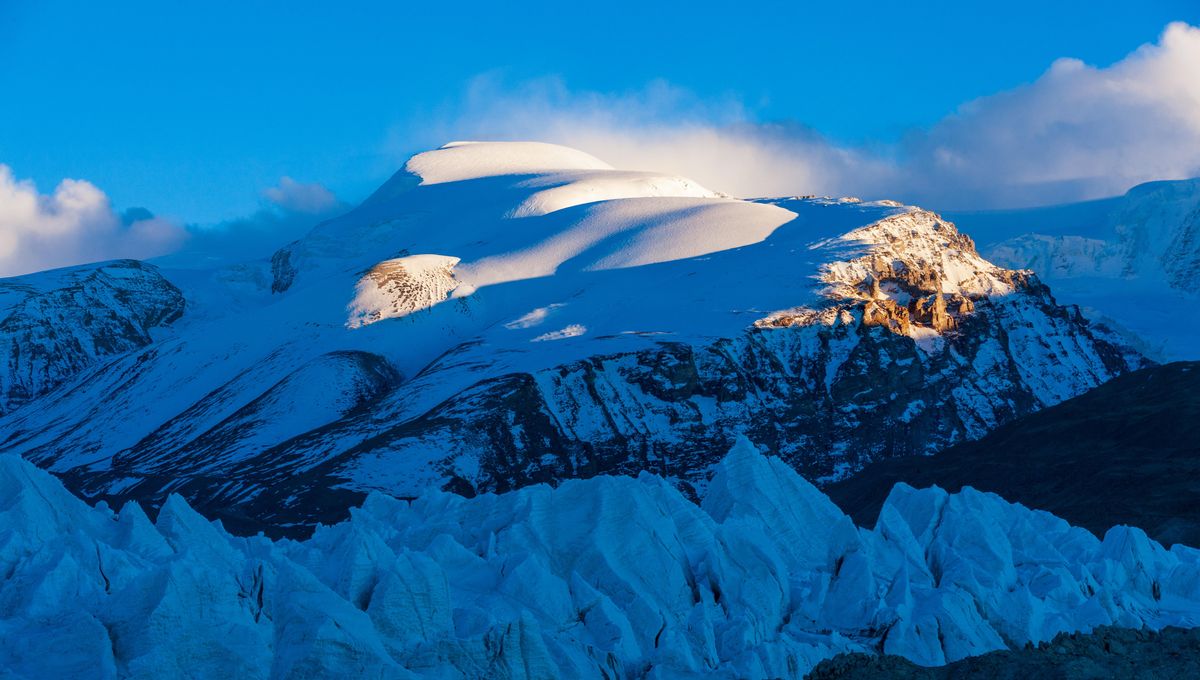
Researchers have collected and analyzed the genomes of 1,705 virus species from ice cores taken from Guliya Glacier on the Tibetan Plateau. This discovery offers 50 times more viral information than has ever been recovered from glaciers in the past.
Although it may sound like the prelude to a story about potential contamination risk from revived pathogens, the reality is that these viruses offer important insights into the climate throughout Earth’s history. They also tell us how viruses adapt to changing temperatures.
As the effects of climate change become more apparent across the world’s ecosystems, scientists are seeking ways to understand how the Earth has adapted in the past. One way to do this is to examine the contents of massive ice structures, like glaciers, which are effectively giant natural freezers or cold archives, containing detailed records of long-lost ecosystems.
Ice core data is becoming increasingly valuable as global temperatures rise and glaciers melt.
For decades, the Guliya Glacier, which is located in the far northwestern Tibetan Plateau, has been among the richest of these archives. In order to access it, scientists have to ascend 6.1 kilometers (20,000 feet) into the Himalayas, a journey that can only be made with the help of yaks. Once they reach the glacier, ice cores are drilled from the frozen environment, which contain the evidence of the distant past scientists need for their research. This includes ancient, long-dormant viruses.
These viruses do not pose a threat to human health as they likely infected other dominant microbes, rather than animals or humans.
But the interdisciplinary team of researchers involved in this latest study found that the virus’s adaptations significantly influenced their hosts’ ability to cope with extreme conditions imposed by the Earth’s changing climate cycles.
“Before this work, how viruses linked to large-scale changes in Earth’s climate had remained largely uninvestigated,” ZhiPing Zhong, a research associate at the Byrd Polar and Climate Research Center at The Ohio State University, explained in a statement. “Glacial ice is so precious, and we often don’t have the large amounts of material required for virus and microbe research.”
The layers of ice contained in the cores retrieved by Zhong and colleagues provided an incredible snapshot of how viruses behaved during three cold-to-warm periods over the last 41,000 years.
Among the various types of new viruses discovered, the team observed a distinct community that dates back around 11,500 years. This was a time of significant climate transition, where the planet went from the cold Last Glacial Stage to the warm Holocene period.
The researchers believe the microbes reacted to climatic changes that occurred as the global temperatures moved from cool to warm conditions. Although it is too early for them to be certain, Zhong explained, “This at least indicates the potential connection between viruses and climate change.”
A closer examination of the viruses’ genetic signatures also revealed that, although most were unique to the Guliya Glacier, around a quarter overlapped with known organisms from other parts of the world.
“That means some of them were potentially transported from areas like the Middle East or even the Arctic,” said Zhong.
Understanding how viruses evolved during intense climate eras offers important clues that may help us predict how modern viruses may react to and engage with future ecosystems. At the same time, organisms contained in ice cores add to the wealth of information researchers can learn about ancient contexts. By finding and sequencing viral DNA, scientists may well identify new mysteries while drawing new conclusions.
The development of this type of research may have benefits that extend beyond this planet. Honing the techniques used in this analysis could offer ways to assess life in outer space environments. It could help efforts to find microbes in the ice fields on Mars, or under the ice shell of other planetary bodies.
But if they are to be effective here on Earth, then scientists need to act fast. The clock, unfortunately, is ticking.
“I’m optimistic about what can be done here, because if we work together, these techniques have much potential to help us start tackling a large array of scientific issues,” Lonnie Thompson, co-author of the study and a professor in earth sciences at Ohio State, added.
The study is published in Nature Geoscience.
Source Link: 1,700 Ancient Viruses From Tibetan Glacier Offer Insight Into The Planet's Changing Climate